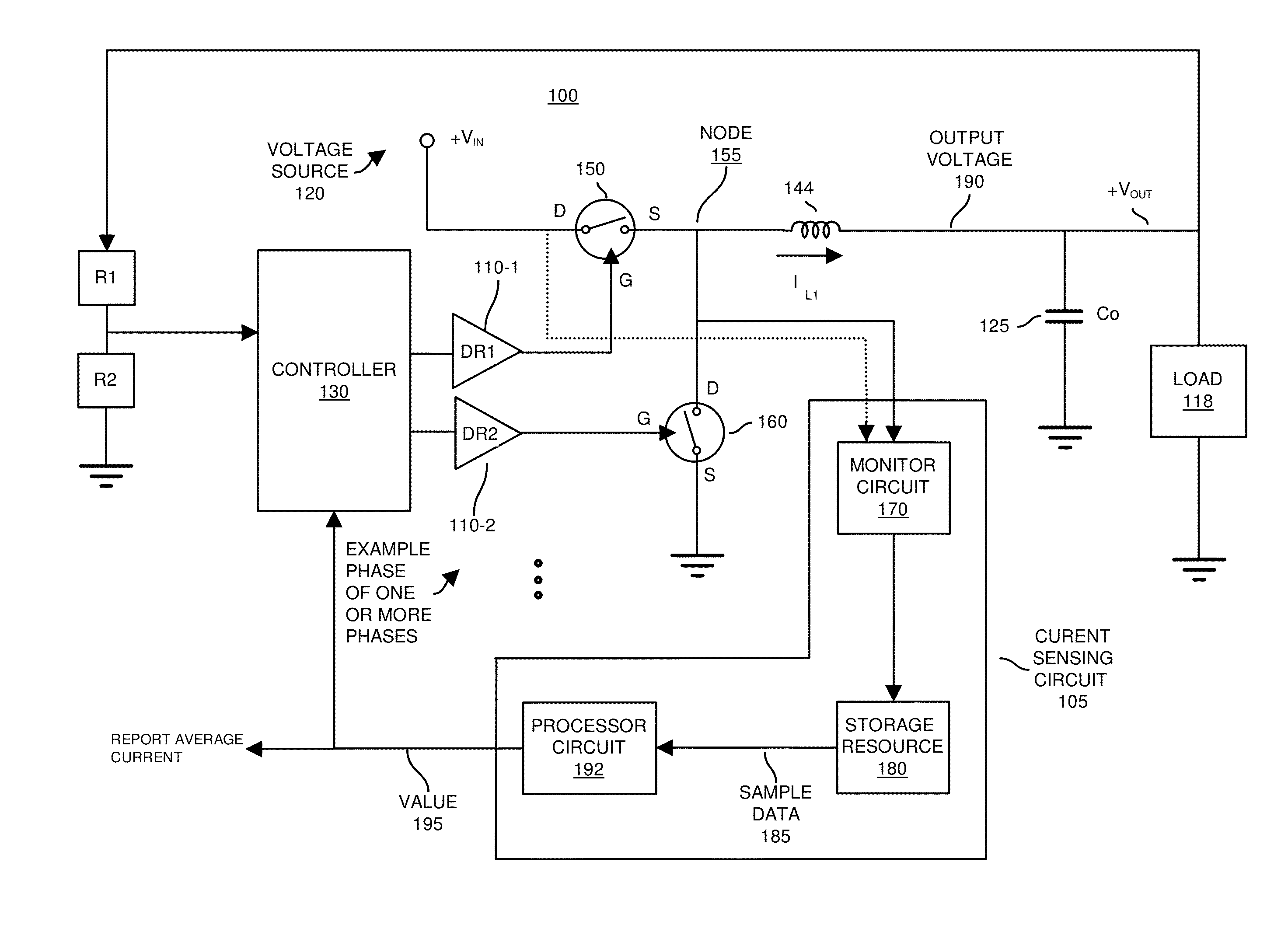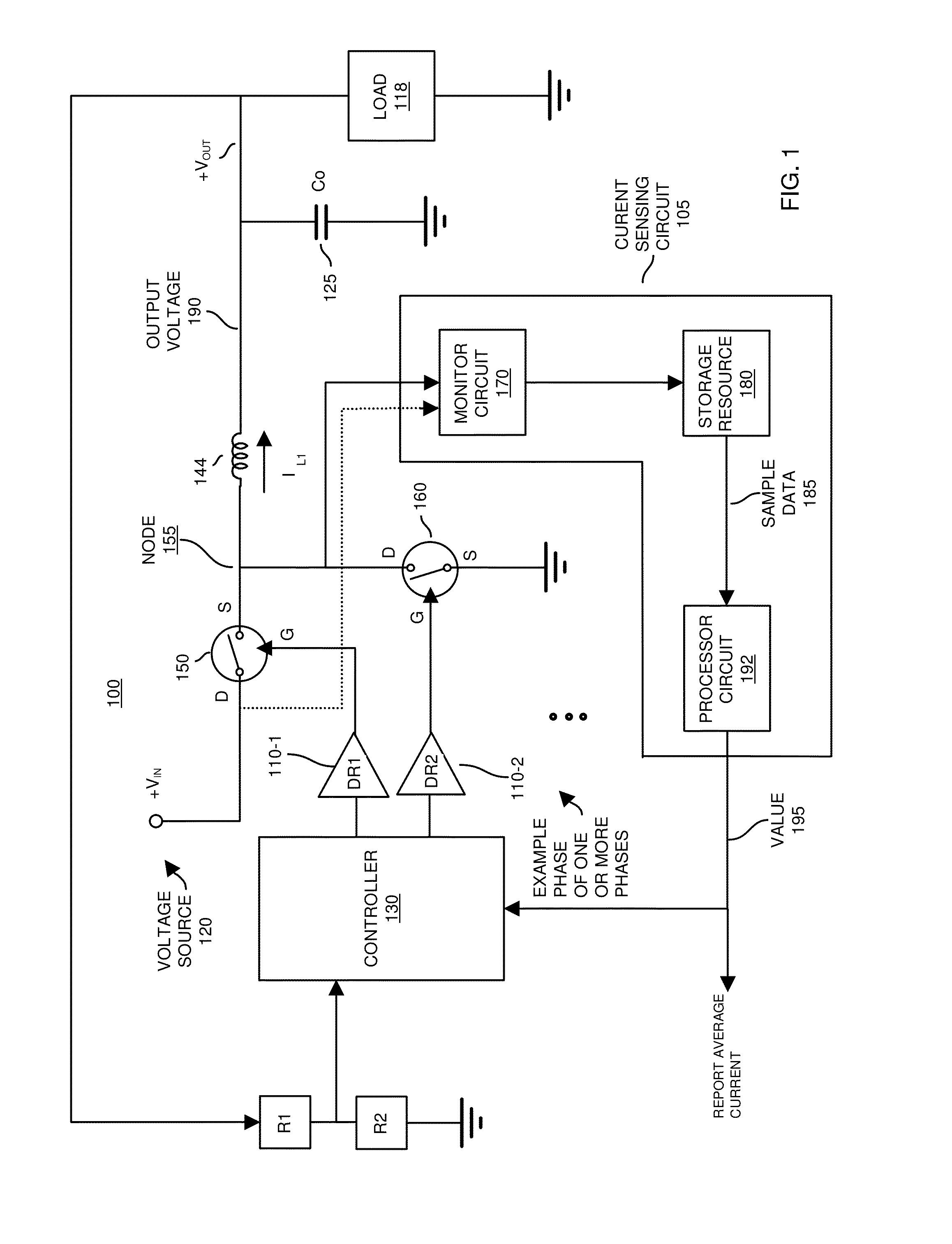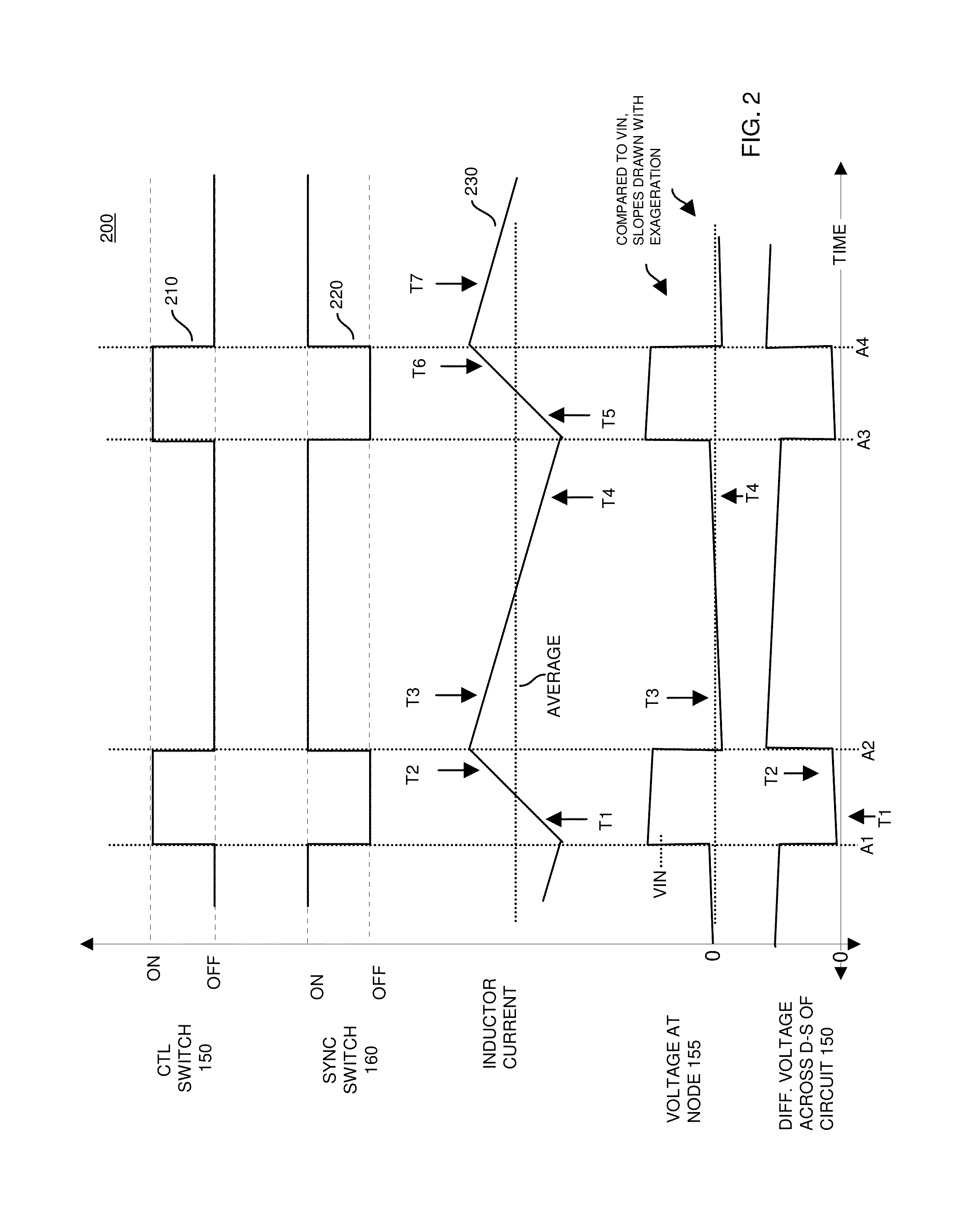Power supply circuitry and current measurement
a power supply circuit and current measurement technology, applied in the direction of electric variable regulation, process and machine control, instruments, etc., can solve the problems of reducing the reliability of the circuit, and reducing the conversion efficiency of the power supply, so as to achieve the effect of higher conversion efficiency
- Summary
- Abstract
- Description
- Claims
- Application Information
AI Technical Summary
Benefits of technology
Problems solved by technology
Method used
Image
Examples
Embodiment Construction
[0035]Embodiments herein include novel ways of measuring current in a switching power supply circuit. For example, in accordance with one embodiment, a power supply circuit includes an inductor, a monitor circuit, a storage resource, and a processor circuit. The inductor resides in a phase of the power supply and conveys current to a load. The monitor circuit monitors and samples the voltage of a node in the power supply. The voltage of the node may be a sawtooth or ramp waveform sampled by the monitor circuit. A magnitude of the voltage at the node varies depending on an amount of current passing through the inductor to the load. The monitor circuit initiates storage of the samples in a storage resource. A processor circuit utilizes the multiple sample voltages stored in the storage resource to produce a value indicative of the amount of average current conveyed through the inductor to the load.
[0036]More specifically, FIG. 1 is an example diagram of power supply circuit including ...
PUM
 Login to View More
Login to View More Abstract
Description
Claims
Application Information
 Login to View More
Login to View More - R&D
- Intellectual Property
- Life Sciences
- Materials
- Tech Scout
- Unparalleled Data Quality
- Higher Quality Content
- 60% Fewer Hallucinations
Browse by: Latest US Patents, China's latest patents, Technical Efficacy Thesaurus, Application Domain, Technology Topic, Popular Technical Reports.
© 2025 PatSnap. All rights reserved.Legal|Privacy policy|Modern Slavery Act Transparency Statement|Sitemap|About US| Contact US: help@patsnap.com



